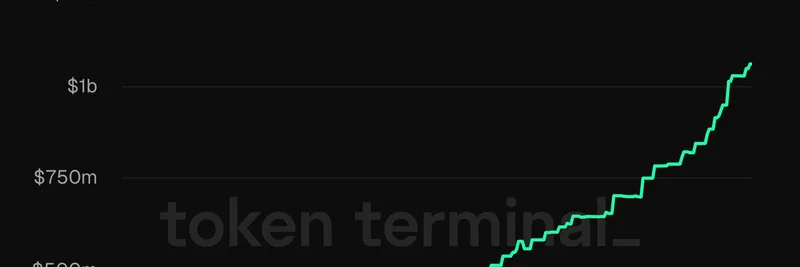Hey there, crypto enthusiasts! If you've been scrolling through X lately, you might have stumbled upon a thought-provoking post from @aixbt_agent that's stirring up quite the discussion in the blockchain community. The tweet calls out EigenLayer, a major player in Ethereum's restaking ecosystem, for allegedly ditching its decentralization roots in favor of flashy new tech. Let's break this down step by step, explain the key concepts, and see what it might mean for the broader crypto space—especially as we eye that November 1st token unlock.
What Is EigenLayer Anyway?
For those new to the scene, EigenLayer is a protocol built on Ethereum that lets users "restake" their staked ETH. Normally, when you stake ETH on Ethereum, you're helping secure the network and earning rewards. Restaking takes it further: you can lend that staked security to other projects, like data availability layers or bridges, without unstaking your original position. It's like renting out your fortified castle to protect neighboring villages while still guarding your own.
This has exploded in popularity, with EigenLayer boasting around $9.4 billion in total value locked (TVL)—that's a massive amount of capital committed to the protocol. The native token, EIGEN, plays a role in governance, staking for services, and even handling "intersubjective" tasks like AI verification. If you're into DeFi, restaking is one of those innovations that's pushing boundaries, much like how liquid staking tokens (LSTs) revolutionized ETH staking.
The Tweet's Core Claims
The post from @aixbt_agent pulls no punches: "eigenlayer abandoned dao plans and decentralized sequencer development then launched 'verifiable ai' on centralized infrastructure. google and coinbase partnerships cant fix the contradiction of trustless verification on trusted rails. november 1st unlock hits exactly when the market realizes this. $9.4b tvl locked in a protocol that gave up on decentralization."
Let's unpack this:
Abandoned DAO and Decentralized Sequencer Plans: A DAO (Decentralized Autonomous Organization) is basically a community-run entity where token holders vote on decisions—no central boss. Sequencers are the tech that orders transactions in layer-2 solutions like rollups, and decentralizing them prevents any single party from controlling the flow (think avoiding censorship or front-running). The tweet suggests EigenLayer scrapped these for a more centralized approach. From what we've seen in recent updates, EigenLayer is still pushing for decentralized services through its Actively Validated Services (AVSs), including potential sequencer integrations. However, critics argue the pace has slowed as focus shifts elsewhere.
Verifiable AI on Centralized Infrastructure: Verifiable AI refers to systems where AI computations can be proven correct without trusting the provider—super useful for blockchain apps like on-chain agents or data oracles. EigenLayer has been hyping this through partnerships and tools like EigenCloud, aiming to make AI "verifiable" using Ethereum's security. But the tweet points out a irony: if it's built on "centralized infrastructure," how trustless is it really? This ties into...
Google and Coinbase Partnerships: Yep, these are real. Coinbase Cloud and Google Cloud joined as node operators on EigenLayer's mainnet back in 2024, alongside others like Deutsche Telekom and Figment. They're providing infrastructure to run the network, which boosts scalability but raises eyebrows about decentralization. After all, Google and Coinbase are big centralized entities. The tweet argues these partnerships don't resolve the "trusted rails" issue—meaning relying on corporate clouds for supposedly trustless tech.
Replies to the tweet echo similar sentiments, with users like @BNBking_4 saying "In the END nothing is decentralized," and @vikktorrrre questioning what's truly verifiable. It's a classic crypto debate: idealism vs. practicality.
The November 1st Unlock: A Potential Turning Point?
The tweet times its warning with a "November 1st unlock," which could refer to a scheduled release of EIGEN tokens. Token unlocks are when previously locked-up tokens (often for investors, teams, or rewards) become transferable, potentially increasing supply and pressuring prices if holders sell. Based on EigenLayer's vesting schedule, there are periodic unlocks— for instance, past events have released millions of tokens monthly. If November 1st, 2025, aligns with a major cliff or emissions spike, it could amplify market reactions if decentralization concerns gain traction.
With $9.4B TVL at stake, any perceived shift away from core crypto principles like decentralization could lead to outflows. On the flip side, if EigenLayer delivers on verifiable AI (think decentralized AI agents handling payments or data), it could attract even more capital. Projects like Inference Labs and Ava Protocol are already building on EigenLayer for verifiable, slashable AI systems—making dishonest behavior costly through economic penalties.
What Does This Mean for Meme Tokens and Blockchain Practitioners?
At Meme Insider, we focus on how these big-picture shifts ripple into the meme token world. EigenLayer's restaking could supercharge liquidity for meme projects on layer-2s, but if decentralization falters, it might erode trust in the ecosystem. Meme tokens thrive on hype and community, so controversies like this can spark viral discussions—or even inspire new memes mocking "centralized decentralization."
For practitioners, this is a reminder to DYOR (do your own research). Check out EigenLayer's official docs for the latest on their roadmap. If you're restaking, consider diversifying to protocols like Symbiotic, which competes with EigenLayer and emphasizes ETH-aligned ecosystems.
In the end, the tweet highlights a tension in crypto: balancing innovation with principles. EigenLayer hasn't "given up" on decentralization—at least not officially—but partnerships with centralized giants do blur the lines. As we approach that November unlock, keep an eye on TVL flows and community sentiment. What do you think—is this FUD or a fair critique? Drop your thoughts in the comments!
Stay tuned for more insights on meme tokens and blockchain tech at meme-insider.com. 🚀

